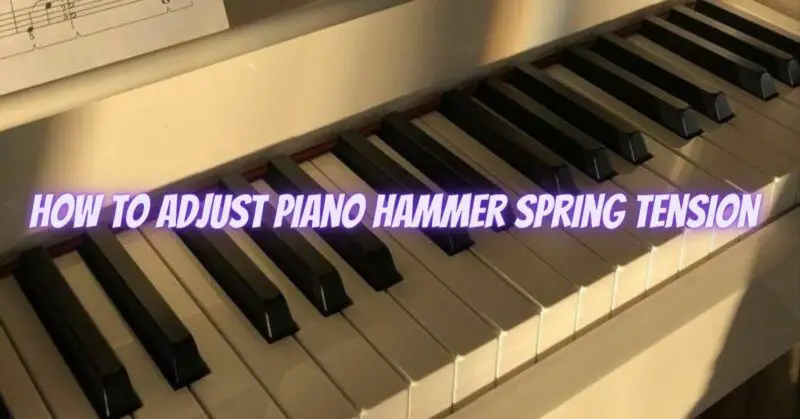The hammer spring tension in a piano action is crucial for achieving the right balance and responsiveness of the keys. Properly adjusted hammer spring tension ensures that the hammers return to their resting position efficiently after each keystroke, allowing for smooth and controlled playing. If you notice issues like sluggish key response or uneven hammer movement, adjusting the hammer spring tension might be necessary. Here’s a step-by-step guide on how to adjust piano hammer spring tension:
1. Gather the Necessary Tools:
- To adjust the hammer spring tension, you will need a piano hammer spring tension tool. This tool is designed specifically for regulating the tension of the springs and is essential for precise adjustments.
2. Locate the Hammer Spring Adjustment Screws:
- Access the piano action and locate the hammer spring adjustment screws. These screws are usually located near the hammers, and you will find one for each hammer in the action.
3. Determine the Required Adjustment:
- Before making any adjustments, play the piano and observe the behavior of the hammers. Determine if the keys feel too heavy or too light, and which areas of the keyboard need attention.
4. Loosen the Hammer Spring Adjustment Screws:
- Use the piano hammer spring tension tool to gently loosen the adjustment screws. Turning the screws counterclockwise will decrease the tension, making the keys feel lighter, while turning them clockwise will increase the tension, making the keys feel heavier.
5. Make Incremental Adjustments:
- Adjust the tension screws in small increments to achieve the desired response. It’s crucial to make gradual changes to avoid over-tensioning or under-tensioning the springs.
6. Test the Piano Action:
- After each adjustment, play the piano to assess the changes in the key response. Listen for evenness in hammer movement and feel for a comfortable and controlled touch.
7. Balance the Piano Action:
- As you adjust the hammer spring tension, aim for a consistent feel and response across the entire keyboard. Balancing the action ensures that each key has a similar touch and allows for smooth transitions between different areas of the keyboard.
8. Fine-Tune as Needed:
- Continue to make small adjustments until you achieve the desired touch and responsiveness. It may take some trial and error to find the perfect balance, so be patient and attentive during the process.
9. Regular Maintenance:
- Piano hammer spring tension can change over time due to usage and environmental factors. Periodically check and adjust the tension as needed to keep the action in optimal condition.
10. Seek Professional Help if Necessary:
- Adjusting hammer spring tension can be a delicate task, and if you are unsure about the process, it’s best to seek the assistance of a qualified piano technician. A professional can ensure precise adjustments and maintain the overall health of the piano action.
Conclusion:
Adjusting piano hammer spring tension is an essential aspect of piano maintenance that directly affects the playability and feel of the instrument. With the right tools and careful adjustments, you can achieve a balanced and responsive piano action that enhances your playing experience. Regularly assessing and fine-tuning the hammer spring tension will contribute to the longevity and performance of your piano. Remember to exercise caution and patience during the adjustment process to achieve the best results.


